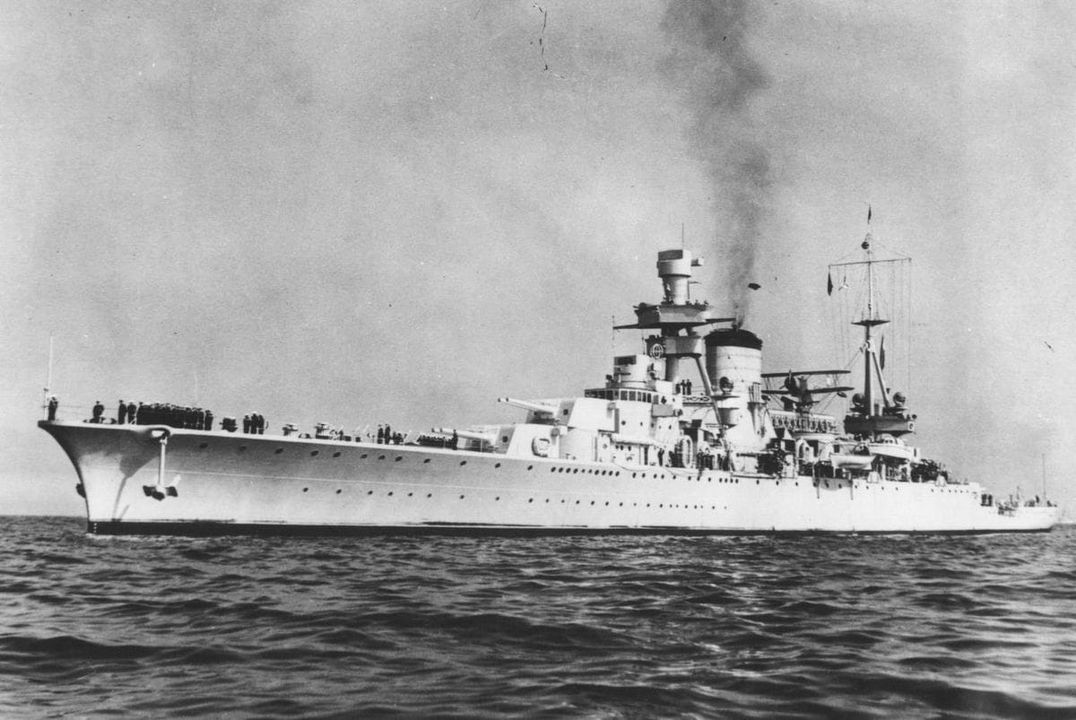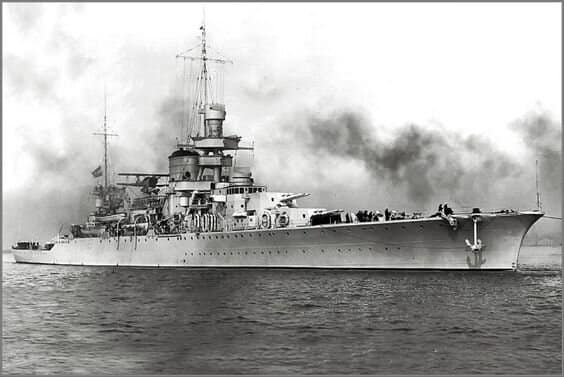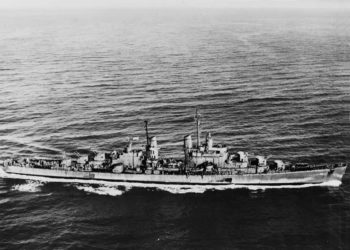Veinticinco de Mayo-Class Cruiser, Argentine Navy

Now after WW1, the major powers of South America found themselves in a rather interesting state and Argentina got the worst of it. Many of the warships they had ordered prior to the conflict had ended up being seized by a number of European nations for them to use during the war and while Brazil and Chile (Argentina’s rivals) were able to get most of them back after the war, Argentina was not so lucky.
So in an attempt to modernize their naval forces, the Argentine Government initiated a program to acquire a number of modern vessels. This included the acquisition of 3 brand new cruisers. Tenders were sent out, and eventually, Argentina selected an Italian design based on the Trento-class cruiser used by the Regia Marina (Italian Navy).
Design and Specifications
But unlike their Italian cousins, the Veinticinco de Mayo-class would be smaller in almost every way. The main battery consisted of 6 x 7.5 inch guns in 3 turrets, as opposed to the 8 x 8 inch guns found on the Trentos. Secondary guns consisted of 12 x 102mm guns, much smaller compared to what was found on Italian cruisers of the time and had relatively light armor for what was supposed to be a Heavy Cruiser. But just like the Trentos, they were very fast. They would have a top speed of 32 knots.
Initially, 3 vessels were planned but due to the rising costs, only 2 vessels were eventually acquired – the Veinticinco de Mayo and her sister, the Almirante Brown.

Operational History
Neither vessel ever saw combat, though the Veinticinco de Mayo was fired upon while on a neutrality patrol during the Spanish Civil war. They were refitted during WW2 and were quite good ships but were soon surpassed by the arrival of ex-U.S. Navy Brooklyn-class Light Cruisers in South America. Both Brazil and Chile acquired vessels, and not wanting to be left out, Argentina also bought 2 as well. One of which you and I know very well.

Decommission and Legacy
In 1951, both Veinticinco de Mayo and Almirante Brown were placed in reserve and were eventually scrapped in 1962.
~NC










